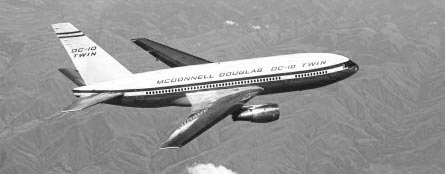- Joined
- 26 May 2006
- Messages
- 34,911
- Reaction score
- 15,786
Hi,
the McDonnell Douglas DC-10 Twin was twin engined airliner project.
the McDonnell Douglas DC-10 Twin was twin engined airliner project.
Attachments
Last edited:
LowObservable said:Performance approximately equivalent to an A300 with the lower hold stuffed with wet sacks of cement.

Source: Flight International - Clipped wings 20/12/05In the early 1970s, MDC also saw the benefits of two engines, and came up with a fairly simple solution – a DC-10 with a slightly shortened fuselage and the centre engine eliminated. Dubbed rather logically the “DC-10 Twin”, this airliner could arguably have stopped the Airbus A300 in its tracks – had the threat of the European twinjet been taken seriously at the time – but it posed a danger to the existing DC-10-10 trijet.The DC-10 Twin had a range of 4,000km with a load of 236 passengers, and an in-service target of 1975. However the company dithered over the decision to launch and never gave the Twin the go-ahead. Although the DC-10 became the benchmark long-haul airliner in its category, MDC had to sit by and watch the A300B4 mop up all the short-haul widebody business in the late 1970s. The concept of a twinjet derivative of the DC-10 and later MD-11 were revisited several times during the 1970s, ‘80s and ‘90s, but none made it off the drawing board.

KJ_Lesnick said:Wouldn't the DC-10 twin carry substantially less fuel as it would only need to fuel two engines?
KJ
Mark Nankivil said:If only MDC had gone forward with this...
In the end, McDonnell Douglas, despite undertaking 34 attempted studies into the DC-10 and MD-11 Twin concepts over the course of 32 years, would ultimately end up releasing only one completely new airliner concept during the same period, that being the original DC-10 of 1971.
The fools!!!Coulda been a great asset to combat the Airbus A300 & was certainly ahead of Boeing in the twinjet market segment. Another great idea laid to waste by development politics & operator bias.
Hi,
the McDonnell Douglas DC-10 Twin was twin engined airliner project.
